Starlink has expanded the reach of broadband internet access to millions of people who previously lacked access to fast and reliable internet. Virtually anyone in North America with a clear view of the sky can not get decent broadband internet service. Starlink is also expanding to offer services all over the world.
Many people use VPN connections both to protect their privacy, hide the websites they visit from their ISP, and connect to external resources such as those required by their employers. Traditionally VPN and satellite internet were a bad combination with all sorts of issues.
Fortunately, the technology used by Starlink is able to much better support the use of VPN technology. Latency has generally been a major hurdle with any satellite-based internet service. Starlink has greatly minimized this issue by using low earth orbit (LEO) satellites. The reduced latency of Starlink makes VPN perform acceptably in most cases.
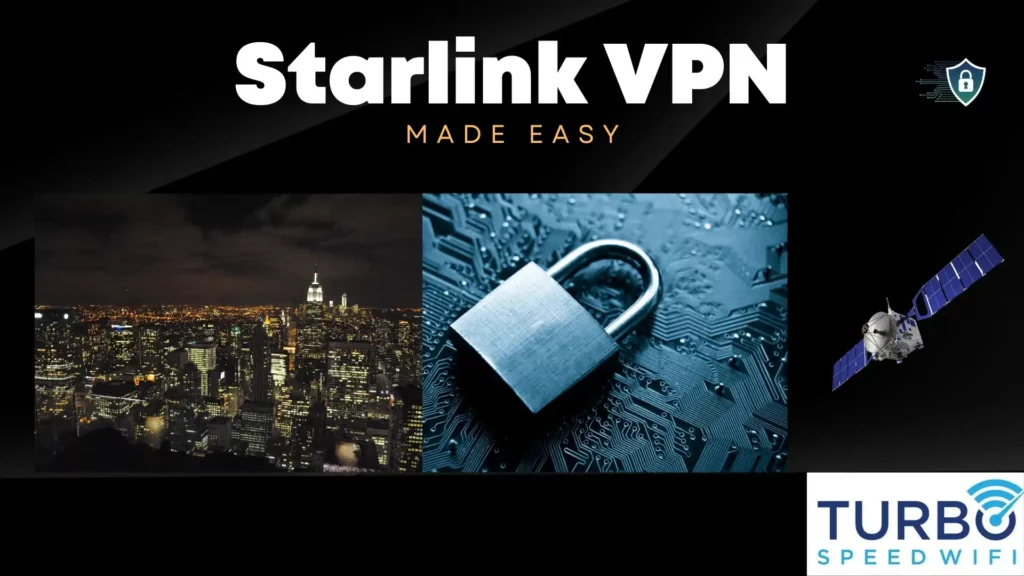
Table of Contents
Starlink VPN Passthrough
The router that is included as part of the Starlink Equipment Package supports VPN passthrough. This means that Starlink is able to allow VPN connections that originate from your home network. VPN passthrough is a common router feature that enables any device connected to that router to establish an outbound VPN connection.
Based on my testing of Starlink Internet Service, I did not find issues connecting to any of the popular VPN service providers. Starlink VPN works great as long as the connection originates from devices on your local network.
Keep in mind that VPN passthrough functionality on a router does not mean VPN server or VPN client functionality. The Starlink router does not have the ability to connect to a VPN service as a VPN client. It also does not have the ability to act as a VPN server. It simply allows VPN to pass through the router without getting obstructed by network address translation (NAT) or firewall rules.
Starlink VPN Issues
Generally, VPN works just fine with Starlink. However, there are a few issues that, based on my testing and feedback from others, can occur. The following is a list of the most common VPN issues on Starlink Internet.
- VPN connection disconnects randomly
- VPN won’t connect at all
- VPN is unstable
- VPN latency is higher than expected
- VPN download and upload speeds are lower than expected
Starlink VPN Drops
By far, the most common problem that I experienced when trying to use VPN with Starlink was unexpected drops in my VPN connection. After digging into this deeper and doing some troubleshooting, I found that most of the drops were actually occurring when Starlink was switching between satellites.
Many VPN protocols are particularly sensitive to any blips in connectivity. Sometimes even momentary interruptions in Starlink coverage can cause your VPN to disconnect. This is probably the number 1 issue that most people will experience if using a VPN on Starlink.
Fortunately, as frustrating as these drops were, they did not occur all that frequently. In some cases, it was several hours between drops. However, anyone planning on using a VPN with Starlink should be aware of this potential issue.
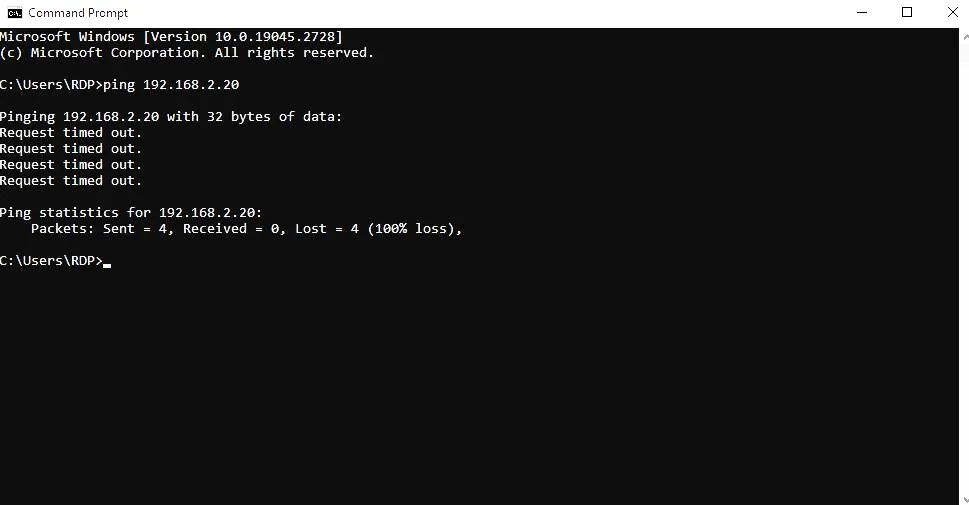
VPN Not Connecting at All on Starlink
There are a few reasons that you may have difficulty connecting to VPN over Starlink. The VPN protocol being used proved to be the most common cause of this issue. Starlink works well with most modern VPN protocols.
OpenVPN, WireGuard, IKEv2, and IPsec VPN protocols all worked well based on my experience using Starlink Internet. If you are using a VPN client that uses one of these modern protocols, you should not have any issues connecting.
Where I found the most issues was when trying to initiate a VPN connection using the older point-to-point tunneling protocol (PPTP). Most people are not using PPTP these days as it is considered a deprecated protocol due to security concerns.
However, when I looked at other people who were having issues with VPN not connecting at all on Starlink, the vast majority were trying to use a PPTP-based VPN connection. Unfortunately, some companies are still using PPTP to enable the remote access of internal resources to employees.

Most companies have moved to VPN solutions that use more modern and secure protocols. These protocols work much better with Starlink.
All of the popular consumer VPN services, including ExpressVPN, NordVPN, Surfshark, Private Internet Access, and IPVanish, all support modern VPN protocols.
A smaller number of people will experience VPN connection issues due to Starlink using carrier-grade network translation (CGNAT) technology. This means that your Starlink router does not have its own dedicated public IP address assigned to it. Given that Starlink doesn’t currently support IPv6, any IPv6 only VPN solutions will also not work.
VPN Latency is Higher than Expected
Latency (Ping) with Starlink is better than with traditional satellite internet providers such as HughesNet and Viasat. However, at this time, Starlink’s latency is still roughly double or triple that of a cable or fiber-based internet connection.
Latency with Starlink is generally between 60 – 90 ms. This is groundbreaking when compared to the 700+ ms ping offered by legacy satellite internet providers.
However, 60 – 90 ms is much higher than the 15 – 40 ms offered by cable (DOCSIS) based ISPs and the 5 – 20 ms offered by fiber-based ISPs.
Latency with Starlink is expected to improve somewhat over time. However, as more customers sign up and satellite capacity gets more constrained, it could actually lead to higher latency over time.
VPN works best with an ultra-low latency connection. VPN adds latency to your connection. Depending on the VPN protocol and where the VPN server is located, VPN can easily double your latency or more.
Choosing a VPN server physically closer to your location is generally helpful. Choosing a fast and lightweight VPN protocol such as WireGuard is also extremely important to get the max VPN performance on Starlink.
Also, it is important to remember that VPN is a tool for hiding your IP address or changing your IP to a different location. VPN was never intended to improve the quality of your internet connection.
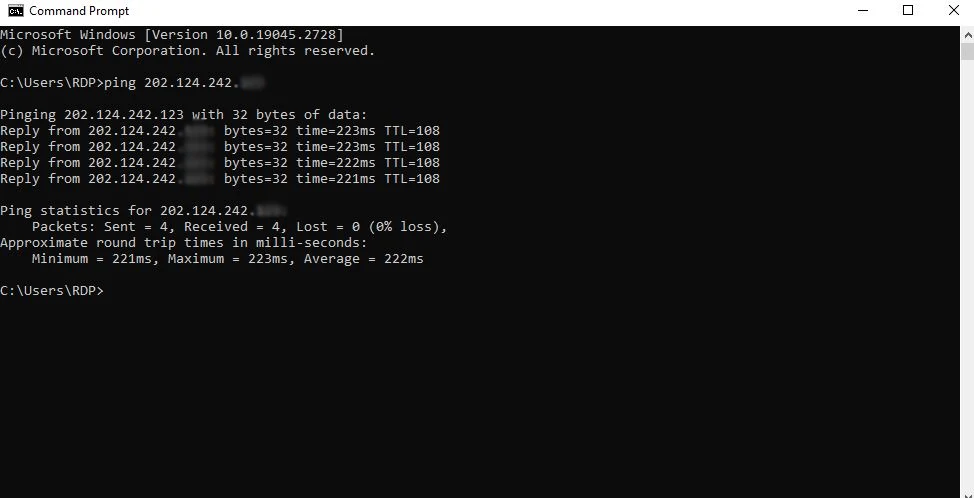
VPN Speeds are Lower than Expected
VPN will make your internet connection slower, it is a hard fact. However, some Starlink users report that their internet speeds take a significant hit when using a VPN. There are a few possible reasons that this is happening.
VPN adds to the amount of data being sent over your internet connection. The encryption used by VPN protocols adds data to the IP headers that are used for communication. Generally, this additional data is about 15% – 20%.
This means that best case scenario, you are losing 15% – 20% off of your max download and upload speeds.
However, many Starlink users are reporting decreases of 50% or more when using VPN. The most likely reason is due to traffic congestion on the VPN server. Depending on the speed of the VPN server you are connecting to and the amount of traffic using the VPN server, your bandwidth can be impacted.
There are many VPN providers, especially free ones, that have servers that are severely overloaded. Some corporate VPN servers also face these challenges. Depending on the corporate network, it is not uncommon for their VPN servers to be undersized for the amount of traffic they receive.
Many companies now have more remote employees than ever before, and many have not upgraded their VPN servers to be able to handle the extra workload on them.
Slow VPN servers are by far the most common reason for slow VPN connection speeds.
It is normal to lose some performance when using a VPN. In most cases, the VPN performance hit is not unique to Starlink but rather a result of slowdowns on the server side.
Starlink IPsec VPN
Starlink generally works okay with IPsec VPNs. IPsec is technically a security protocol rather than a VPN connection protocol. IPsec is typically used with the L2TP VPN protocol. L2TP/IPsec is not the preferred VPN protocol for using with Starlink Internet Service, but based on my testing, it generally will work acceptably.
SSL-based VPNs that operate over port 443 are the best option for Starlink because they do not require special ports and look like regular encrypted web traffic.
If you have a choice, I would recommend using an SSL VPN rather than an IPsec VPN on Starlink. However, if you are forced to use an IPsec VPN by your employer, generally, it will work. Speeds may be lower, and you might experience more drops, but it will generally work okay. Most modern VPN servers can be configured to use either protocol.
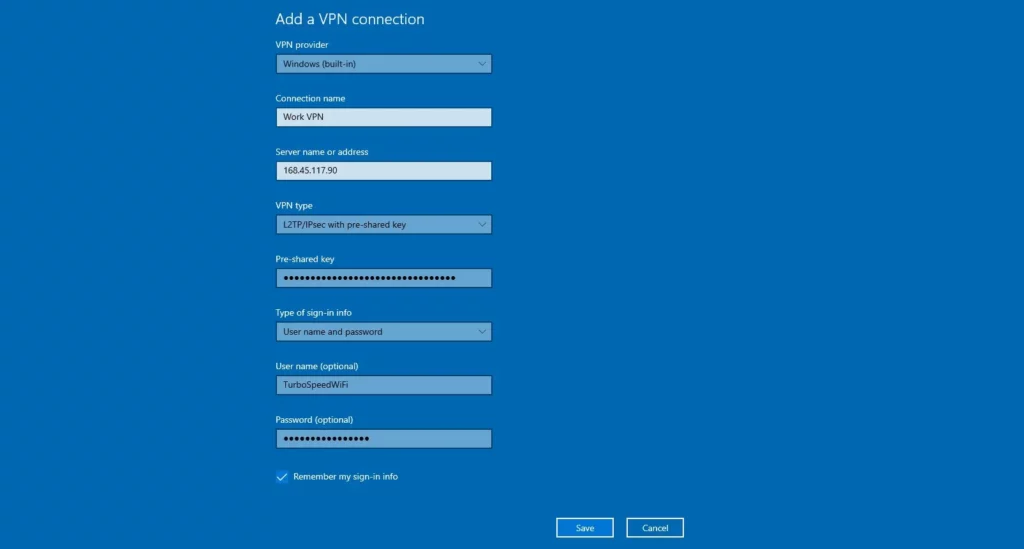
Starlink OpenVPN
OpenVPN generally works better on Starlink than IPsec. If you are looking for a common VPN protocol that works well on Starlink, OpenVPN is a great choice. OpenVPN, by default, uses UDP port 1194. However, it is easy to change an OpenVPN server to connect on port 443.
Connecting on port 443 will make VPN traffic blend in with regular HTTPS encrypted web traffic. For best results on Starlink, switching OpenVPN connections to use port 443 is recommended.
OpenVPN is supported by many popular VPN clients, including Cisco AnyConnect and FortiClient. Many popular privacy VPNs intended for consumer use also support OpenVPN. OpenVPN is an open-source VPN protocol that is considered by many security experts to be the optimal choice.
Starlink OpenVPN performance is generally the next best thing to using the WireGuard protocol. If you are using a VPN and WireGuard is not an option for you, OpenVPN configured to use port 443 is the next best thing.
Starlink PPTP VPN
Starlink does not play friendly with the older PPTP and VPNs that use it. Fortunately, PPTP is not as common as it once ones. PPTP is not considered to be secure and has not been recommended for a number of years.
That said, some people still use PPTP to connect to their employers, and Starlink many not work properly for these people. Switching to L2TP/IPsec or OpenVPN will fix most Starlink VPN-related issues. Given the choice, avoid PPTP for your VPN connection.
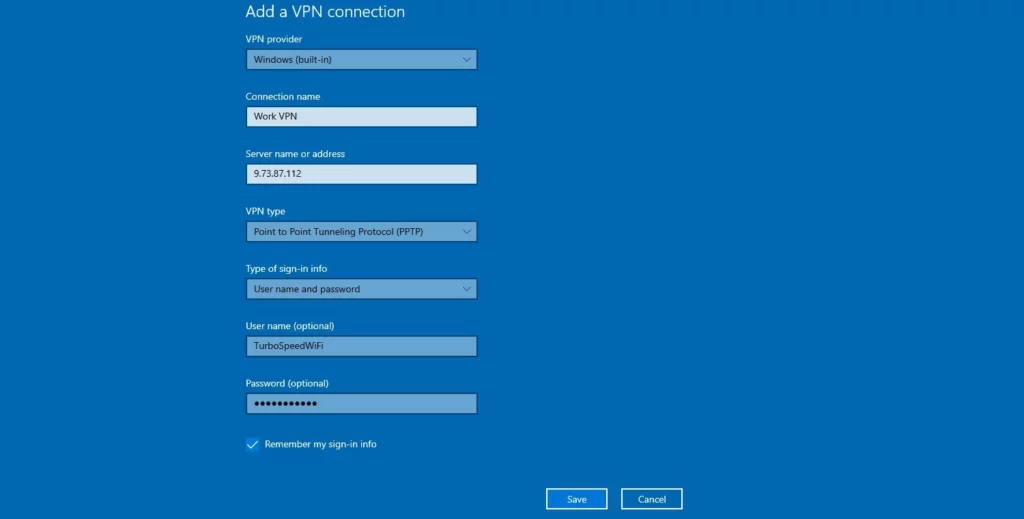
How to Install VPN on Starlink Router
Unfortunately, it is not possible to install VPN on your Starlink router. It is one of many reasons that many people opt to use their own router with Starlink Internet. The included Starlink Router is extremely basic and doesn’t offer much in the way of features.
Common features missing from the Starlink router include Port Forwarding, VPN client, VPN server, dual WAN ports, advanced firewall rules, etc.
If you want to use a router as a VPN client or a VPN server on Starlink, you will need to use your own router and put the Starlink router into bypass mode. This is the closest you can get with Starlink to bypassing the Starlink router.
There is a fair amount of information available on using your own router with SpaceX Starlink Internet. However, the exact setup information is a bit vague. Most of the information that is available comes from public forums and not from the manufacturer.
There is no true bridge mode because Starlink uses CGNAT rather than giving residential customers a proper public routable IP address. Starlink Business customers have the option of getting a public routable IP address. Keep in mind that even this is a dynamic IP address and not a true static IP address that most business internet services offer.
Using a third-party router will enable you to use a router-based VPN client with Starlink. It is not generally possible to use a VPN server on your network with Starlink. This is because Starlink uses CGNAT, and therefore there is no way to specify how traffic is to enter your network from the outside to connect to the VPN server.
If you want to host VPN services in your network that uses Starlink, you will need Starlink Business which offers a publicly routable IP address. You will also need a dynamic DNS or some other method of handling a dynamic IP address, given the Starlink Business IP addresses are not static.
How to Install VPN on Client Devices
Installing VPN on client devices, including laptops, desktops, tablets, and smartphones, is generally a simple process. Most VPN service providers include their own apps that can be used to connect you to their VPN service automatically. Using the app is generally the easiest setup method.
When setting up a connection to a corporate VPN, generally, the IT department of your employer can walk you through the process of getting your VPN set up. Installing VPN for Starlink on your devices is generally a straightforward process.
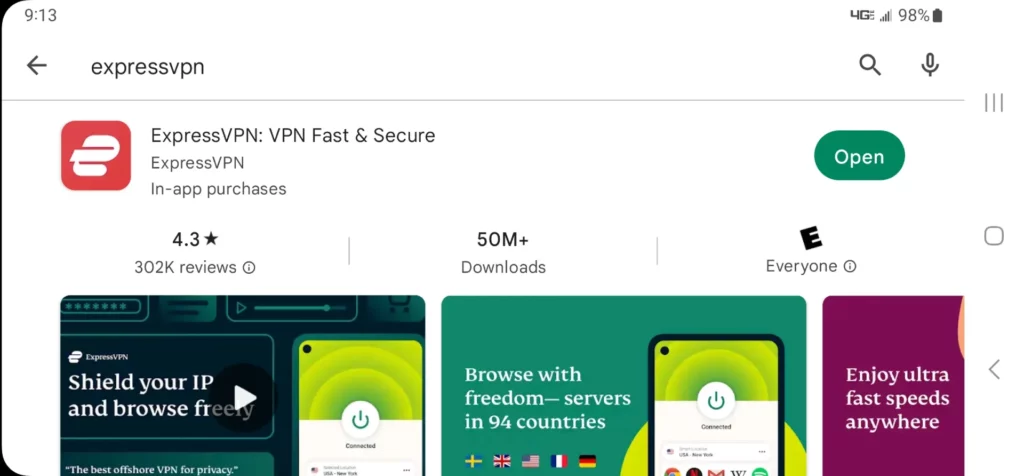
Commercial VPN Services that Work With Starlink
The vast majority of commercial VPN services work well with Starlink Internet. However, there are significant differences in performance between commercial VPN providers regardless of which ISP you are using.
The two commercial VPN services that I routinely recommend to clients who work with me are ExpressVPN and NordVPN.
For Starlink users, I would lean toward NordVPN, as it tends to be faster to reconnect after a blip in internet connectivity. NordVPN also offers frequent promotions where you can save 60% or more and get a free trial of the service.

Conclusion: Does Starlink Work With VPN
Generally, Starlink works acceptably with VPN. It is able to support the most commonly used VPN protocols. However, based on my testing and the feedback from other Starlink users on Reddit, VPN does not work as well on Starlink as it does on a cable or fiber-based internet connection.
This is not surprising, given the way that VPN works and the fact that Starlink does frequently experience momentary blips in signal, which can lead to brief drops.
Starlink works acceptably with VPN in most situations. However, if you have a choice of a cable or fiber internet option and use VPN regularly, I would not recommend Starlink, given the potential issues. However, if you just need to use a VPN from time to time to protect your privacy, Starlink is perfectly fine. Most privacy-focused VPNs will work just fine on Starlink Internet.

Patrick Ring
Wednesday 12th of July 2023
You said,"Starlink generally works okay with IPsec VPNs. " I'd like to know what you did to make it happen. Some have mentioned NAT-T, but at the same time the ESP protocol and AH protocol are blocked by functions of Starlink. Thus far, I have not been able to overcome this. Could you clarify? -Thanks
Zachary Harper
Sunday 23rd of July 2023
In my experience Starlink works okay with IPsec VPN connections. This means okay on the client side with Starlink and not on the server side. For example a person who works from home can connect into a corporate IPsec VPN from their home via their Starlink Internet Service. You will not be able to properly host a VPN server on a Starlink connection because Starlink uses CGNAT rather than assigning a publicly routable IP address. Some people have been able to get around this via IPv6 or other IPv6 to IPv4 technologies, but I have had no such success. Hope this helps.